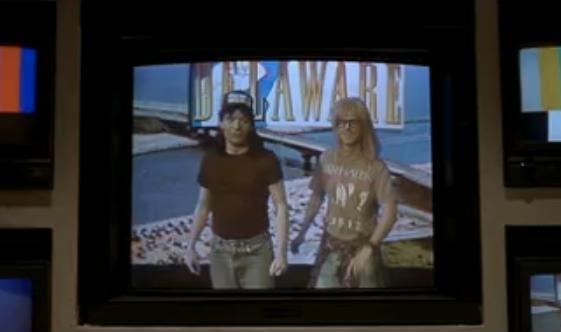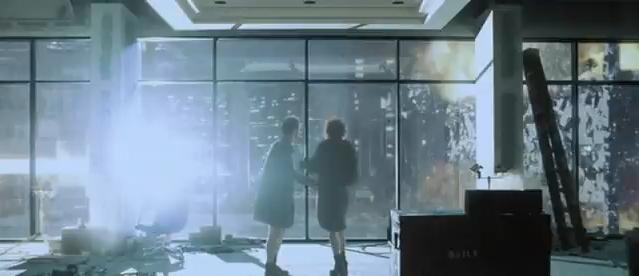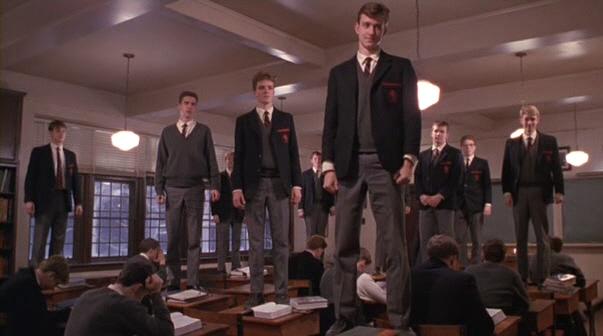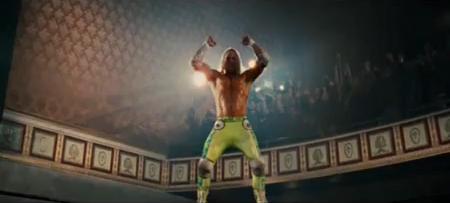 I believe it was Wayne Campbell who summed up the steep challenge facing Delaware’s film office when it comes to luring major productions to set their movies on location in the state. Flush with cash for his new Wayne’s World network show, Campbell and loyal sidekick, Garth Algar stand in front of a blue screen that can chroma key them to any location in the world. First, they visit excitingly dangerous New York City (“I’ve got a gun. Let’s go to a Broadway show.”), then romantic Hawaii (“Hey, you wanna lei me? Pass the poi, mahalo.”) and then rodeo-tastic Texas (“Howdy partners, let’s raise and rope broncos.”). Finally, Wayne and Garth are “magically whisked away to Delaware,” with a clearly-puzzled and disappointed Wayne weakly declaring, “Hi… I’m in Delaware.” Yes, the very first U.S. state typically has a rather boring on-screen reputation. But that’s not always the case. In 1981, the Financial Center Development Act made
I believe it was Wayne Campbell who summed up the steep challenge facing Delaware’s film office when it comes to luring major productions to set their movies on location in the state. Flush with cash for his new Wayne’s World network show, Campbell and loyal sidekick, Garth Algar stand in front of a blue screen that can chroma key them to any location in the world. First, they visit excitingly dangerous New York City (“I’ve got a gun. Let’s go to a Broadway show.”), then romantic Hawaii (“Hey, you wanna lei me? Pass the poi, mahalo.”) and then rodeo-tastic Texas (“Howdy partners, let’s raise and rope broncos.”). Finally, Wayne and Garth are “magically whisked away to Delaware,” with a clearly-puzzled and disappointed Wayne weakly declaring, “Hi… I’m in Delaware.” Yes, the very first U.S. state typically has a rather boring on-screen reputation. But that’s not always the case. In 1981, the Financial Center Development Act made  the city of Wilmington the credit card capital of the whole damn country. This also made its new crop of high-rise towers a very tempting target for cinematic anarchists like Tyler Durden. In fact, when Durden’s “Project Mayhem” reaches its final explosive climax in Fight Club, his aim seems to be set squarely at the corporate face of Delaware’s credit industry. It’s true that Wilmington is never named outright as the setting, and the entire film was shot in L.A., but the city’s zip code (19808), upbeat motto (“a place to be somebody”) and Delaware license plates make appearances. Characters also make mention of the neighboring towns Delaware City, Penns Grove and New Castle. It was in and around New Castle and Middletown that a big studio film was actually shot in Delaware, but set in Vermont.
the city of Wilmington the credit card capital of the whole damn country. This also made its new crop of high-rise towers a very tempting target for cinematic anarchists like Tyler Durden. In fact, when Durden’s “Project Mayhem” reaches its final explosive climax in Fight Club, his aim seems to be set squarely at the corporate face of Delaware’s credit industry. It’s true that Wilmington is never named outright as the setting, and the entire film was shot in L.A., but the city’s zip code (19808), upbeat motto (“a place to be somebody”) and Delaware license plates make appearances. Characters also make mention of the neighboring towns Delaware City, Penns Grove and New Castle. It was in and around New Castle and Middletown that a big studio film was actually shot in Delaware, but set in Vermont.  The Dead Poets Society are students who attend preppy Welton Academy (St. Andrews Academy in Middletown), and go to the “old Indian cave” (Beaver Valley Cave) to recite inspiring verses to one another. Evoking the proper crispness of a New England autumn and winter, the film’s male students ignore the chilly decorum of school tradition, and climb atop their desks to shout “Oh Captain! My Captain!” The hero of The Wrestler takes a more rock and roll approach. Randy “The Ram” Robinson enters Wilmington’s Rialto Theatre to the tune of “Sweet Child O’ Mine,” then uses the cheering crowd to fuel his climb up a corner turnbuckle to unleash the “Ram Jam” on The Ayatollah in the film’s final scene. The “Rialto” (identified by several yellow posters in Robinson’s dressing room) is Dover, New Jersey’s Baker Theater. The intimate venue seems to be set in Wilmington to emphasize The Ram’s last shot at a (relatively) big time stage,
The Dead Poets Society are students who attend preppy Welton Academy (St. Andrews Academy in Middletown), and go to the “old Indian cave” (Beaver Valley Cave) to recite inspiring verses to one another. Evoking the proper crispness of a New England autumn and winter, the film’s male students ignore the chilly decorum of school tradition, and climb atop their desks to shout “Oh Captain! My Captain!” The hero of The Wrestler takes a more rock and roll approach. Randy “The Ram” Robinson enters Wilmington’s Rialto Theatre to the tune of “Sweet Child O’ Mine,” then uses the cheering crowd to fuel his climb up a corner turnbuckle to unleash the “Ram Jam” on The Ayatollah in the film’s final scene. The “Rialto” (identified by several yellow posters in Robinson’s dressing room) is Dover, New Jersey’s Baker Theater. The intimate venue seems to be set in Wilmington to emphasize The Ram’s last shot at a (relatively) big time stage,  after years of slowly destroying his body in small Delaware Valley gyms and halls. But the manufacturing of destruction is what put Wilmington’s most well-known company on the map. It satrted when E.I. du Pont began selling his gunpowder beside the Brandywine Creek in 1802. Over the last 100 years, DuPont has produced several advances which have affected what we see in movies. On the low-end of this cinematic scale is the discovery of synthetic rubber, or Neoprene, which crippled colonial rubber plantations (like the French one in Apocalypse Now Redux), and ended their use (thankfully) as a modern film setting. Further up the scale would be the discovery of kevlar (used in flak jackets and bullet proof vests). Meanwhile, nylon’s variety and lycra’s elasticity both forever changed female fashions on-screen and off. So while Wilmington rarely appears on movie screens, just remember its legacy is almost always there.
after years of slowly destroying his body in small Delaware Valley gyms and halls. But the manufacturing of destruction is what put Wilmington’s most well-known company on the map. It satrted when E.I. du Pont began selling his gunpowder beside the Brandywine Creek in 1802. Over the last 100 years, DuPont has produced several advances which have affected what we see in movies. On the low-end of this cinematic scale is the discovery of synthetic rubber, or Neoprene, which crippled colonial rubber plantations (like the French one in Apocalypse Now Redux), and ended their use (thankfully) as a modern film setting. Further up the scale would be the discovery of kevlar (used in flak jackets and bullet proof vests). Meanwhile, nylon’s variety and lycra’s elasticity both forever changed female fashions on-screen and off. So while Wilmington rarely appears on movie screens, just remember its legacy is almost always there.
3 minutes read
Wilmington, Delaware
3 minutes read